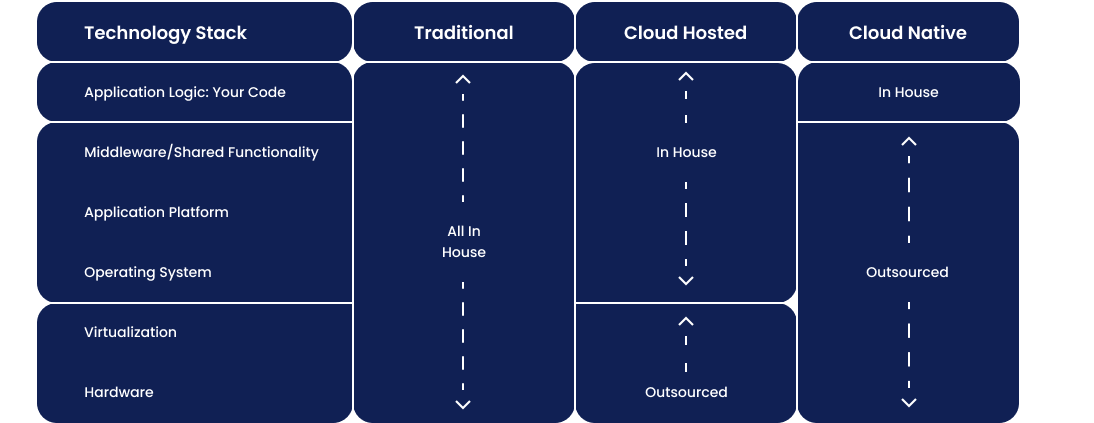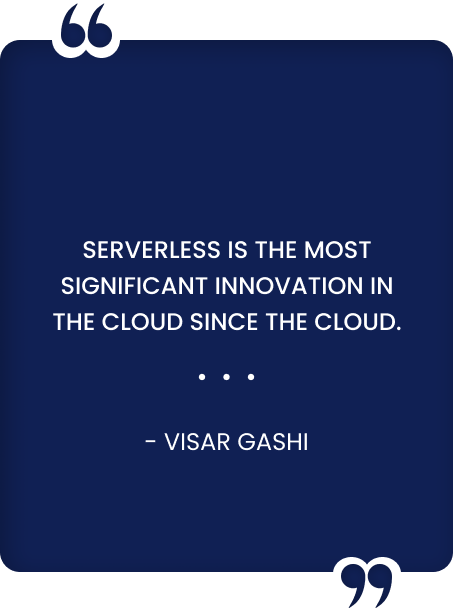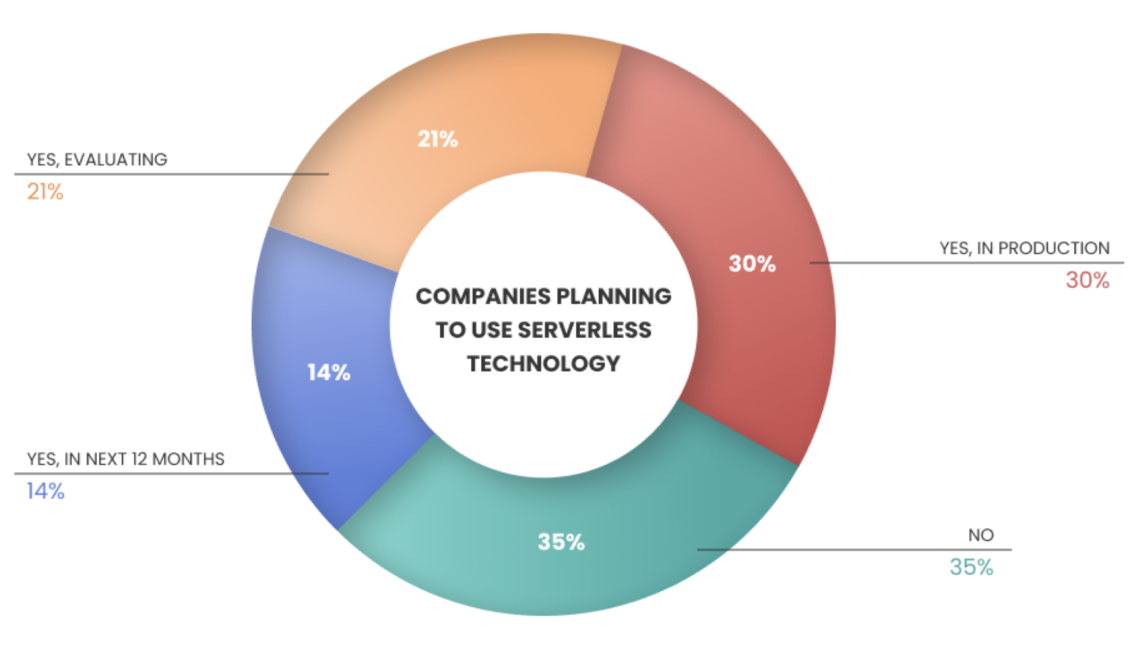
See why a cloud-native or serverless environment is an ideal, sophisticated, and secure tech solution. This cloud-native explainer walks you through the cost efficiency, security, and flexibility benefits.
In the early days of computing, the only way a business could leverage technology was to manage everything on site. Thus, a model was born. Every company had its own infrastructure and its own teams to keep things running. And, because habits are hard to break, many people still view this as a sort of default relationship with technology.
Today, however, it's not necessary or often even desirable to take on every aspect of managing your technology. Think about the coffee creamer you keep in the break room. Unless it's core to your business, you don't own the cow (or the almond grove), keep it healthy or make sure it's producing enough. You leave that to specialists. You just need to take care of the refrigerator so your employees can access what they need to do their jobs.
In cloud-native computing, as with keeping the fridge stocked, you simply let go of as much behind-the-scenes ownership as you can.
What's Yours—and What's Not—in a Cloud-Native Infrastructure
Developers visualize technology as a stack, with hardware as a foundation topped by layers of operating systems, applications and code. Traditionally, your company would be responsible for the whole stack—top to bottom. If you were running short on storage or needed new software, you'd have to request it, buy it, wait for it to arrive and install it yourself.
Cloud hosting makes that much simpler—outsourcing the hardware and virtualization layers provides access to near-infinite resources. You can tap into more of what you need with a click. But you're still responsible for your own operating systems and software.

A cloud-native approach takes this one giant step further, handing off everything through middleware, including cross-cutting concerns such as logging and security that are shared across apps. You own the application logic—your specific code and business rules—but you leave managing, storing, patching and provisioning everything from hardware through the applications themselves to your service provider. If something breaks, the provider has armies of people ready to fix it.
Best of all, almost everything can be done using out-of-the-box services by AWS (Amazon Web Services—the leader in the cloud services space) or other providers. So you can be up and running in a snap and respond to market changes astonishingly quickly.
Through economies of scale and dedicated professional teams keeping your tech up to date, a cloud-native approach offers profound benefits, including:
Significant cost savings
Minimal internal operational support needed
Superior security
Improved application performance
Absolute scalability and resilience
Faster time to market
The Next Step: Going Serverless
I've been known to say—and you can quote me on this—that serverless is the most significant innovation in the cloud since the cloud itself.
The first thing to know is that "serverless" has been misnamed. A serverless model absolutely uses cloud-based servers.
In a serverless environment, however, when an application isn't active, it sits on a virtual shelf like a library book, waiting to be called into service. It's there and available, but it's not using resources or costing money until you need it. This is incredibly important—especially for small and mid-size operations that don't have a lot of extra budget to throw around. If you have a key application that is only running for a minute a day, you only pay for a minute a day.

Thanks to the low costs and high reliability, serverless adoption continues to grow as the word gets out, with about 65% of global companies looking at serverless for at least some of their computing in the near future.

To be fair, some processes aren't a great fit for serverless solutions. Operations that load every time you use them take time to spin up. This can be just 60 milliseconds—less time than it takes to blink—but there may be cases where that's too long. Larger apps may take a minute or more to boot, and apps that require a lot of back-and-forth communication with a server can be an issue.
For those situations there are other cloud-native solutions, such as containers, that can be called into play. And while many people conflate cloud native and containers, that's a post for another day. In the meantime, I hope this cloud-native explainer has at least helped answer some of your questions about whether a serverless or other modern architecture might be appropriate for you.


